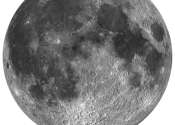Solving the sun's super-heating mystery with Parker Solar Probe
It's one of the greatest and longest-running mysteries surrounding, quite literally, our sun—why is its outer atmosphere hotter than its fiery surface?

It's one of the greatest and longest-running mysteries surrounding, quite literally, our sun—why is its outer atmosphere hotter than its fiery surface?
Space Exploration
Jun 4, 2019
13
1286

NASA's MAVEN spacecraft performed a previously unscheduled maneuver this week to avoid a collision in the near future with Mars' moon Phobos.
Space Exploration
Mar 2, 2017
0
507

The shimmering green, red and purple curtains of the northern and southern lights—the auroras—may be the best-known phenomena lighting up the nighttime sky, but the most mysterious are the mauve and white streaks called ...
Earth Sciences
Dec 9, 2023
0
1543

During a solar eclipse, the Moon's passage overhead blocks out the majority of the Sun's light and casts a wide swath of the Earth into darkness. The land under the Moon's shadow receives less incoming energy than the surrounding ...
Earth Sciences
Oct 5, 2011
3
0

(PhysOrg.com) -- Researchers at the University of Dundee have made a breakthrough in the study of magnetic fields, which enhances our understanding of how stars, including the Sun, work.
General Physics
Aug 20, 2010
12
0

The largest storm in the solar system, a 10,000-mile-wide anticyclone called the Great Red Spot, has decorated Jupiter's surface for hundreds of years.
Planetary Sciences
Aug 11, 2023
1
101

Billions of years ago when the planets of our solar system were still young, Mars was a very different world. Liquid water flowed in long rivers that emptied into lakes and shallow seas. A thick atmosphere blanketed the ...
Space Exploration
Nov 13, 2013
21
0

To the surprise of many planetary scientists, the oxidized iron mineral hematite has been discovered at high latitudes on the Moon, according to a study published today in Science Advances led by Shuai Li, assistant researcher ...
Space Exploration
Sep 2, 2020
8
470

Scientists at UCL have observed how a widespread polar wind is driving gas from the atmosphere of Saturn's moon Titan. The team analysed data gathered over seven years by the international Cassini probe, and found that the ...
Space Exploration
Jun 18, 2015
0
3995

A massive white dwarf star with a bizarre carbon-rich atmosphere could be two white dwarfs merged together according to an international team led by University of Warwick astronomers, and only narrowly avoided destruction.
Astronomy
Mar 2, 2020
11
3176